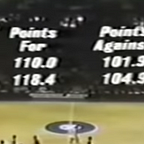Jean Montero, a 17-year old Point Guard from the Dominican Republic, has established himself as one of the best (international) prospects for the 2022 Draft. Ignacio Rissotto ranked him first on his 2022-eligible international class rankings, Eurospects have him 3rd on their 2003-generation ranking, Jonathan Wasserman placed him fifth on his 2022 Draft board, and Ross Homan ranked him in the third tier (4th to 6th spot) of his 2022 board. The savvy teenager projects as a primary creator in the NBA, as he’s already proven his scoring abilities in the Adidas Next Generation Tournament and the LEB Plata, the third tier of Spanish basketball. He also shows impressive playmaking flashes, but that part of his game is in an earlier stage of development than his scoring. For Montero to fulfill his potential, his ability to score and distribute out of the pick & roll will be essential. Here’s why I believe that he has major upside as a P&R operator and what he needs to improve on to fulfill his sky-high potential.
Which elements of the P&R does he already excel at?
Jean Montero possesses an outstanding handle with a vast array of moves as well as a quick first step, which allow him to create space with ease. His good pull-up jump shot — Montero, according to my database, is a 33.3% three-point shooter (92–276) on very difficult, mostly self-created shots — and his ability to read his defenders and act accordingly add to his unpredictability as an on-ball creator. Attempts to stay in front of him 1v1 are often in vain, and the screen in P&R situations represents another obstacle in the already difficult situations Montero’s defenders find themselves in. Unsurprisingly then, Montero gets downhill with great frequency, creating favorable scoring positions for himself or opening them up for teammates by drawing help defenders after he’s beaten the original on-ball defender.
Scoring out of P&R situations:
Generating advantages, drawing help and creating passing windows:
Why is he not an elite P&R operator yet?
Elite P&R players, the Chris Pauls and Steve Nashs of the world, can make every pass, from every angle, with either hand. Of course it would be unreasonable to expect a 17-year old to be as proficient in these situations as those Hall of Famers, but it’s necessary to examine what Montero can improve on, and more importantly, how he can improve on it.
Montero is pretty comfortable making two-handed passes in the pick & roll, either over the top of the defender to the roll-man or kicking it out to three-point shooters. One-handed passes, however, are a different story. He rarely even attempts to hit the roll-man with a pocket bounce pass, and he seems to generally avoid passes where the majority of the energy has to come from his wrist, showing more proficiency when he can create power by swinging his whole arm. Judging by some of his outlet passes, which can be quite slow and are usually played at a high angle, he lacks strength in his wrists and/or forearm, which would explain why he’s not comfortable hitting the roll-man with flick-of-the-wrist-bounce-passes yet. Of course, this is far from unusual for a 17-year old, and it can actually be seen as a positive. Developing strength in your wrists and forearm is significantly easier than developing the ability to create space, and Montero has the latter down to a T.
Of course, if a player doesn’t make certain types of passes, it could also be that he doesn’t see them, that it’s a vision issue, but I don’t believe that to be the case with Montero. Judging by his head movements and where he appears to be looking, he knows that the pocket pass is there, but doesn’t quite trust himself to execute it.
One-Handed Pass out of P&R:
The Importance of Experience
Of course, making these passes and decisions is also a matter of experience, and judging by the games I’ve seen from Montero’s 2019 EYBL and U-16 Americas campaigns, I would not be surprised if didn’t have all that much experience as a pick & roll operator before this season. In those competitions, he faced a lot of zone defense and was by far his team’s best player (the Dominican Republic team was also way too small to excel in P&R; their tallest player was 6'5", the teams of the USA, Canada and Argentina were 6'5" on average), so the games were more isolation-heavy and less structured. Therefore, the move to Gran Canaria was really important for Montero. Not only did he get to play with and against older players — he’s become too good to compete with players his age — he also got a lot of reps in pick & roll and was paired with a strong and mobile roll-man in Khalifa Diop, who consistently created advantages for him with hard screens.
Still, as discussed, he has room for improvement as a pick & roll operator, and more reps in these situations would certainly benefit him, which is why I’m slightly worried about next season. It has already been reported that Montero will spend preseason with the ACB team, which will give him the opportunity to prove that he belongs with the senior team. The senior team, however, already has multiple established guards, so it won’t be easy for Montero to get game time. It boils down to this: It would be awesome for Montero to get minutes with the senior team, but he would also benefit from as much game experience as possible, which he’s more likely to get in the LEB Plata. Then again, he might already to be good for the LEB Plata, so yeah, it’ll be very interesting to see how Montero’s next season plays out. It’ll be a crucial one for his development.
